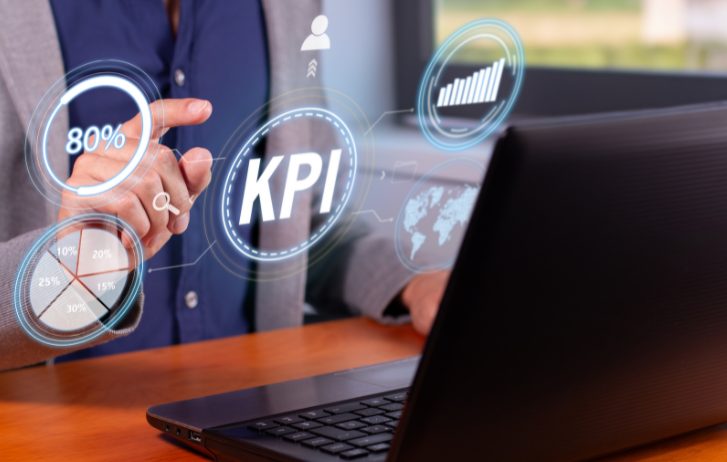
How To Achieve Digital Transformation For Your Business In One Year
By FedEx | July 12, 2024
Amid today’s volatile economic and environmental landscape, fast-paced technological developments, and shifting customer expectations, SMEs must embrace digital transformation to stay competitive and capitalize on new opportunities. If you are just starting out, here’s a one-year digital transformation roadmap to help you accelerate business growth and future proof your company.
- The consensus is clear: today’s businesses won’t remain competitive for long unless they go through the digital transformation journey.
- Every business has a different approach for digital transformation, but there are certain steps and milestones you can aim for.
- The basic steps for digital transformation include: Assessing current capabilities, identifying key digital initiatives, testing against identified KPIs, and iterating based on results and feedback.
The COVID-19 crisis kickstarted a new wave of digital transformation, with businesses moving into the digital space to survive lockdowns. Four years on, shifting from analog to digital has become more essential than ever for businesses.
Today, small and medium enterprises (SMEs) face a new surge of uncertainties: the climate and biodiversity crisis, global economic tensions, technological changes, and evolving customer needs. With digital transformation, businesses can respond faster to changing market conditions brought about by these uncertainties and stay competitive.
Digital transformation: What’s in it for me?
While many would understand digital transformation as adopting technologies for previously analog processes in business operations, the goal, according to McKinsey, is to use those technologies at scale to increase cost efficiency and enhance the customer experience. Overall, it helps businesses build a competitive advantage.
In fact, a resounding 97% of start-ups and established companies globally say that businesses won’t remain competitive unless they transform digitally.
One key reason is customers’ new expectations. Customers these days expect fuss-free and frictionless experiences. Digital natives, in particular, want their interactions and transactions to be as fast and intuitive as messaging or gaming. They also demand value and innovation more than ever.
Your employees’ expectations have changed, too. The digital era has democratized data, and employees expect information to flow more equitably across organizations rather than in the traditional top-down fashion. This breakdown of data silos makes it easier for your employees to collaborate and innovate.
Digitally transforming your business can help it thrive amid changes and uncertainties.
How can you implement digital transformation?
Keep in mind that transformation is not just about adopting new technologies, but also about fundamentally reshaping your business strategies, operations, and customer engagement.
While different businesses may have different timelines, there are certain milestones to aim for that can keep you on track. Below, we have put together a one-year digital transformation roadmap to serve as your guide.
Months 1-2: Assess and strategize
Successful digital transformation starts with a thorough assessment of your business’ current digital capabilities.
For an objective and expert opinion, consider hiring a third-party consultant. The consultant should be able to examine key areas of your business, such as customer experience, marketing effectiveness, operational efficiency, and data management.
This includes revisiting your business’ map of the customer journey, which shows how consumers interact with your brand at every touchpoint. Walk through the customer journey again, and look for customer pain points as well as opportunities for your business.
One key question to ask yourself is: which parts of the customer journey urgently need to shift to digital or become more efficient? For example, if your customers find purchasing inconvenient due to your limited modes of payment, this is your sign to add digital channels.
In this initial phase of transformation, conducting market research is also important. Check where your competitors are in their digital transformation journeys. Do you see their businesses performing better as a result of digitization? Try assessing how your business is performing relative to your competitors.
Months 3-5: Conduct tests based on your objectives and KPIs
Now that you have a clear understanding of your business’ current digital capabilities and market position, prioritize two to three digital initiatives that will deliver the most impact to your business goals.
For example, if your immediate goal is to have more online shoppers, prioritize implementing a robust e-commerce platform.
Identify key objectives and metrics for each initiative – for example, the percentage of increase in revenue from new digital services, or an improvement in customer satisfaction scores. Doing so enables you to measure and evaluate whether your digital transformation initiatives are effective.
Once you have identified your KPIs, determine the data that needs to be collected to track these indicators. Take customer experience as an example. A sample metric can be the average resolution time for concerns and complaints. From here, you and your tech team can decide which platforms to use for recording and analyzing the data. Having a detailed plan for your data ensures a more efficient implementation of your digital initiatives.
Conduct a pilot test or a proof of concept (POC) before implementing in full. If you have a small business with a lean budget, testing digital initiatives on a smaller scale will be less risky for your bottom line. A pilot test will also yield valuable insights and user feedback, enabling you to further refine your digital solutions.
Months 6-8: Technology adoption
After the successful pilots, you should now be ready to implement your tried-and-tested technologies. At this stage, turn your attention to employee upskilling and training. This prepares your employees to use these technologies to better serve your customers.
However, this is not just about practical training. Your employees will also need to understand and appreciate why these new tools are necessary. Your digital transformation goes beyond the adoption of new technologies, and entails a cultural transformation in your company as well - one that fosters a ‘digital’ mindset.
Months 9-12: Continuous improvement
During these early months of implementation, monitor your business’ digital performance based on the KPIs you have identified. Get feedback from both your customers and your employees about the new technologies.
Continue to iterate based on results and feedback. Again, test and implement this iteration, remembering to get regular feedback from your employees and customers.
As you transform digitally, remember to empower your employees through continuous learning initiatives. Customer satisfaction is not the only driver for your digital transformation success; leadership buy-in and employee engagement are critical too. After all, digital transformation is a process that never ends as your business continues to adapt to changes.
Re-energizing your business through digital transformation
Digital transformation not only helps to keep your business competitive in a rapidly changing global landscape; it also helps revitalize it. Re-energizing your business requires making room for new ideas, starting with prioritizing your customers, and implementing changes with a defined scope. This can inspire not just a digital shift, but also an energetic shift in your company towards a fresher, more innovative culture.
SHARE THIS STORY
Sign up now and save on your shipping rates!
Sign up now and earn discounts by shipping instantly with FedEx Ship ManagerTM at fedex.com.
Recommended For You

4 Tips For Enhanced Connectivity To Transform Your Business
From e-commerce strategy to operations and logistics, the latest tech and digital connectivity trends are reshaping how SMEs and e-tailers evolve.
Read More
How China’s Airport Economic Zones Are Propelling SME Growth
Airport Economic Zones are driving cross-border trade across China and beyond. We dive into how airport ecosystems are powering trade and SME growth.
Read More
Decoding The E-Commerce Landscape In China, India And Japan
Our recently published e-books for the China, Japan and India markets explore trends and opportunities for Asia Pacific SMEs.
Read More



